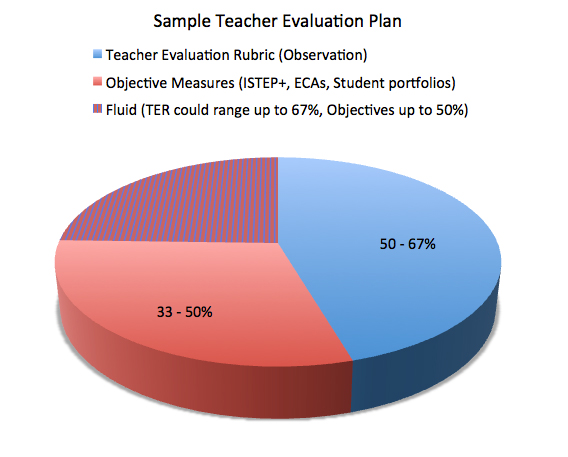SBOE Will Look To Update Teacher Evaluations

Jessica Conlon of TNTP, presents the organization\’s recommendations to improve Indiana\’s teacher evaluation system. photo credit: Claire McInerny / StateImpact Indiana
In an effort to improve Indiana’s teacher evaluation system, the State Board of Education voted Wednesday to move forward with a set of recommendations from a third party education group.
National non-profit TNTP created the suggested improvements, after spending the last few months conducting focus groups and surveying educators around the state to evaluate how they perceive Indiana’s teacher evaluation system. Data showed 60 percent of the 2,400 educators surveyed are unsatisfied with some portion of their corporation’s evaluation system.
As a result of this research, TNTP recommended to the SBOE that a priority in improving the teacher evaluation system should be making sure everyone involved – including teachers, principals, district officials and state leaders – understand the goals of the evaluations and how the process works.
Other recommendations include mandatory instruction for educators on how the process works and what it is evaluating, engaging teachers in the process of designing a corporation’s evaluation process, and the use of objective measures – the most controversial portion of TNTP’s report.
School corporations design their own evaluation systems, adhering to certain guidelines provided by the state, which requires districts use both teacher observation and objective measures to evaluate a teacher.
TNTP’s recommendation for evaluating teachers continues to be a combination of teacher observation and objective measures, illustrated below:

Infographic Credit: Rachel Morello/StateImpact Indiana. Information provided by State Board of Education.
The teacher evaluation rubric, which constitutes between 50 and 67 percent of the entire evaluation, must look at purposeful planning, effective instruction and teacher leadership, but specifics of the rubric are left up to districts.
Objective measures, which must make up between one third to one half of the entire evaluation, are:
- Individual Growth Model: This would be the ISTEP+, and must weigh more than any other objective measure.
- School Wide Learning: This is the schools’ A-F grade, and must count for at least 5 percent of objective measures.
- Student Learning Objectives: An example of this would be if a school wanted to look at a specific group of students, say one 7th grade English class, and see how they perform and grow over a year, and that would contribute to that 7th grade English teacher’s evaluation.
- Targeted Learning Objective: An example of this measure would be if a teacher created a group of students who are all struggling academically, and measuring this group’s improvement over the course of a year as part of the teacher’s evaluation.
- Student Portfolio Assessments: Having students assemble a portfolio of work to measure teacher effectiveness.
- End of Course Exams: The tests already being used in classrooms can be used as part of the evaluation.
Opponents of the recommendations testified during the meeting, saying use of measures like the ISTEP+ in evaluating a teacher’s effectiveness is unfair and not indicative of a teacher’s ability. Board member and sixth grade teacher Cari Whicker voted against moving forward with these recommendations, saying most of the objective measures are still tied to testing. The one that isn’t, student portfolios, is unreasonable to ask of teachers with more than 100 students.
State Superintendent Glenda Ritz also voted against moving forward with the recommendation.
“Educators had enough thrown on their plate already and they don’t need another thing thrown at them,” Ritz said.
The board’s strategic planning committee will consider the recommendations, updating and changing them before final board approval.
